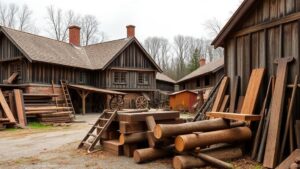Tracing Historical Clock Repair Shops for Early Timepiece Tools
Tracing Historical Clock Repair Shops for Early Timepiece Tools
The history of timekeeping is as intricate and deep-rooted as the mechanisms that keep time. From the celestial bodies that govern day and night to the clockmakers and repair shops that shaped our understanding of time, the story of early timepiece tools is one of innovation, tradition, and craftsmanship. This article aims to explore the historical context of clock repair shops, the evolution of early timepiece tools, and their significance in both a cultural and technological framework.
The Evolution of Timekeeping
The development of timekeeping devices has been crucial to human society, evolving from sundials in ancient civilizations to mechanical clocks in the Middle Ages. introduction of the escapement mechanism in the 13th century was a pivotal moment, allowing for more accurate timekeeping and leading to the creation of the first truly portable timepieces.
By the 17th century, clock repair became a specialized trade, with establishments dedicated to maintaining and restoring these invaluable instruments. In England, for instance, Christopher Wrens designs in the late 1600s paved the way for sophisticated clockmaking and repair techniques.
Significant Clock Repair Shops Through History
Several clock repair shops have left a notable mark on the field of horology. For example, in London, the shop of Thomas Tompion (1639-1713) became renowned for producing some of the finest clocks of the period. Often referred to as the father of English clockmaking, Tompions workshop utilized advanced tools and techniques that would influence generations of clockmakers.
- Smith and Sons: Founded in 1833, this shop in the UK was noted for its high-quality repairs and restorations of antique clocks.
- The Howard Clock Company: Established in the late 19th century, this American company became a key player in providing both decorative and functional timepieces, emphasizing repair and restoration.
Early clock repair featured a variety of specialized tools, each designed for particular tasks in the delicate process of rebuilding and restoring timepieces. Significant tools included:
- Brass and Steel Screwdrivers: Essential for fastening delicate components without damaging them.
- Clock Keys: Used for winding mechanisms and adjusting time settings.
- Escapement Testers: Devices that allow the horologist to assess the function of escapements, vital for accurate timekeeping.
- Jeweling Tools: Used to configure and install synthetic jewels in the bearings of the movement to reduce friction.
Examples of these tools can be found in museums, like the Museum of Timekeeping in Dulwich, London, where visitors can view artifacts dating back to the 16th century.
The Role of Clock Repair Shops in Society
Clock repair shops were not just places for maintenance; they were community hubs where local culture and craftsmanship thrived. They often served as informal social settings where individuals exchanged ideas and stories while waiting for their timepieces to be repaired. craftsmanship displayed in these shops reflected the technological capabilities and artistic expressions of the time.
Also, the preservation of vintage clocks served as a bridge between generations, fostering a shared appreciation for history and craftsmanship that is still valued today. In particular, in the 19th century, the establishment of repair shops in smaller towns ensured that the art of horology was accessible, leading to a broader understanding of mechanical engineering principles and artistic design.
Conclusion
Tracing the history of clock repair shops reveals much about the development of early timepiece tools and the cultural significance they held in society. The craftsmanship that went into both the initial creation of timepieces and their subsequent repair serves as a testament to human ingenuity and the quest for precision in measuring time. Through the exploration of specific historical clock repair establishments and their tools, we gain insight into an essential aspect of our shared technological heritage.
To further explore this topic or to engage with existing horology communities, consider visiting local museums, attending workshops, or even participating in online forums dedicated to clock repair and restoration. Embracing this knowledge contributes to a richer understanding of both the past and present of timekeeping technology.



